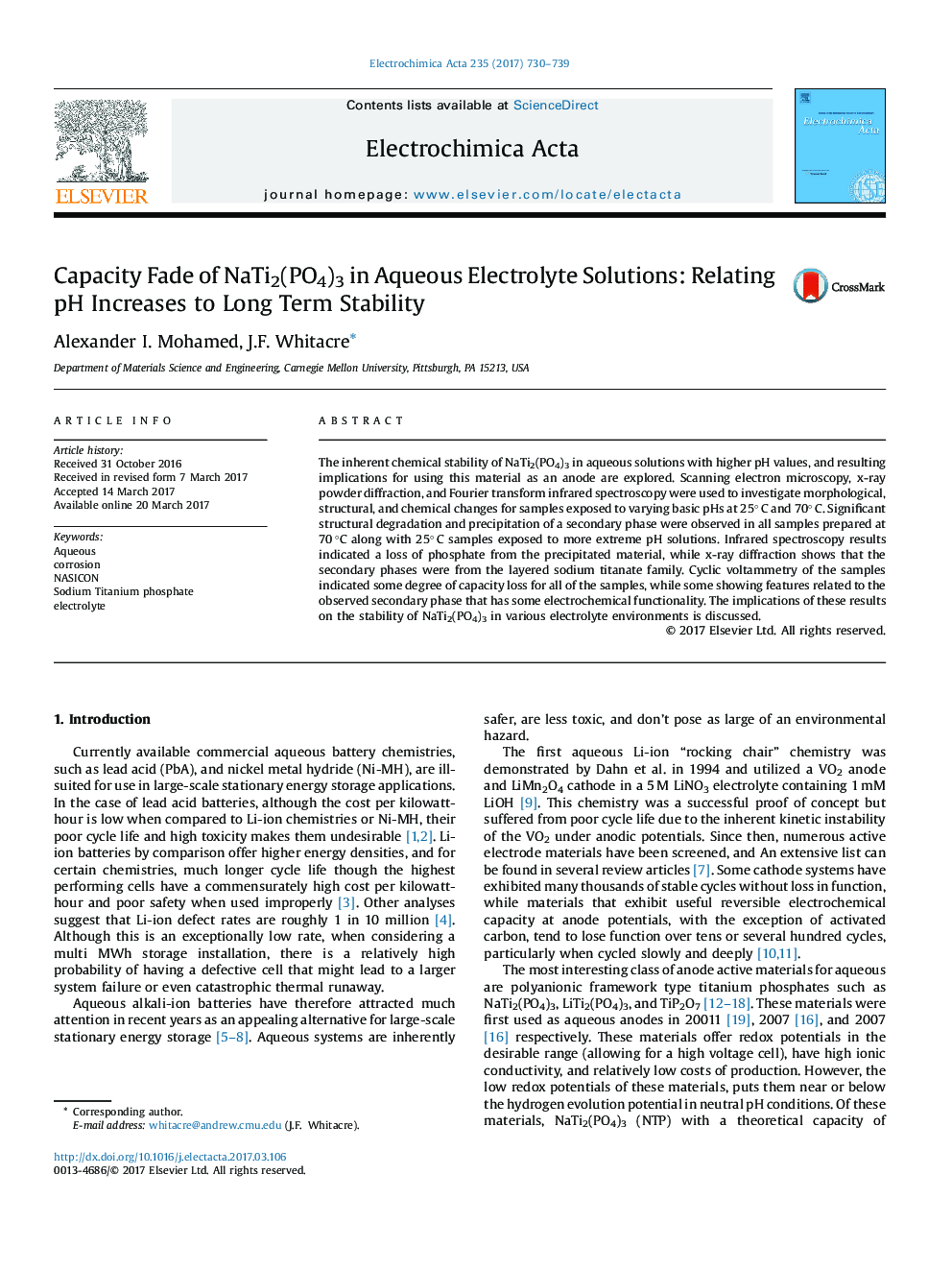| Article ID | Journal | Published Year | Pages | File Type |
|---|---|---|---|---|
| 6471756 | Electrochimica Acta | 2017 | 10 Pages |
The inherent chemical stability of NaTi2(PO4)3 in aqueous solutions with higher pH values, and resulting implications for using this material as an anode are explored. Scanning electron microscopy, x-ray powder diffraction, and Fourier transform infrared spectroscopy were used to investigate morphological, structural, and chemical changes for samples exposed to varying basic pHs at 25° C and 70° C. Significant structural degradation and precipitation of a secondary phase were observed in all samples prepared at 70 °C along with 25° C samples exposed to more extreme pH solutions. Infrared spectroscopy results indicated a loss of phosphate from the precipitated material, while x-ray diffraction shows that the secondary phases were from the layered sodium titanate family. Cyclic voltammetry of the samples indicated some degree of capacity loss for all of the samples, while some showing features related to the observed secondary phase that has some electrochemical functionality. The implications of these results on the stability of NaTi2(PO4)3 in various electrolyte environments is discussed.
